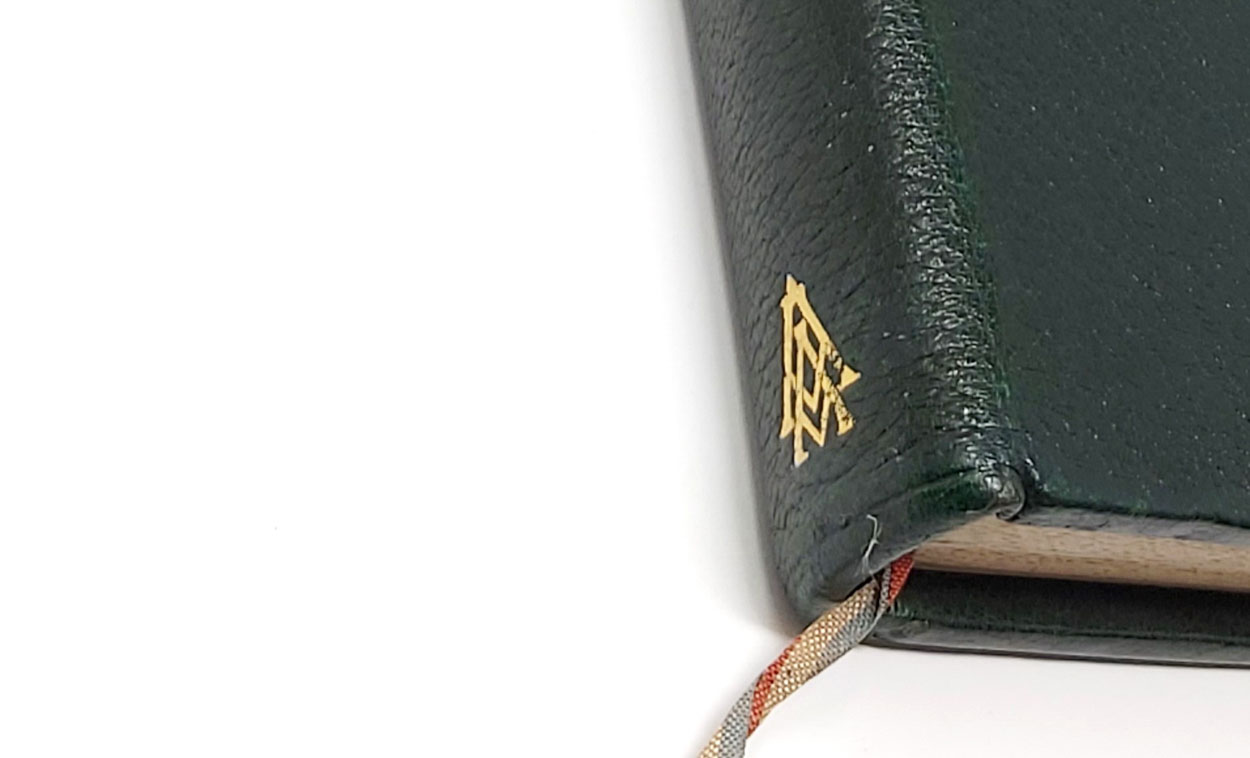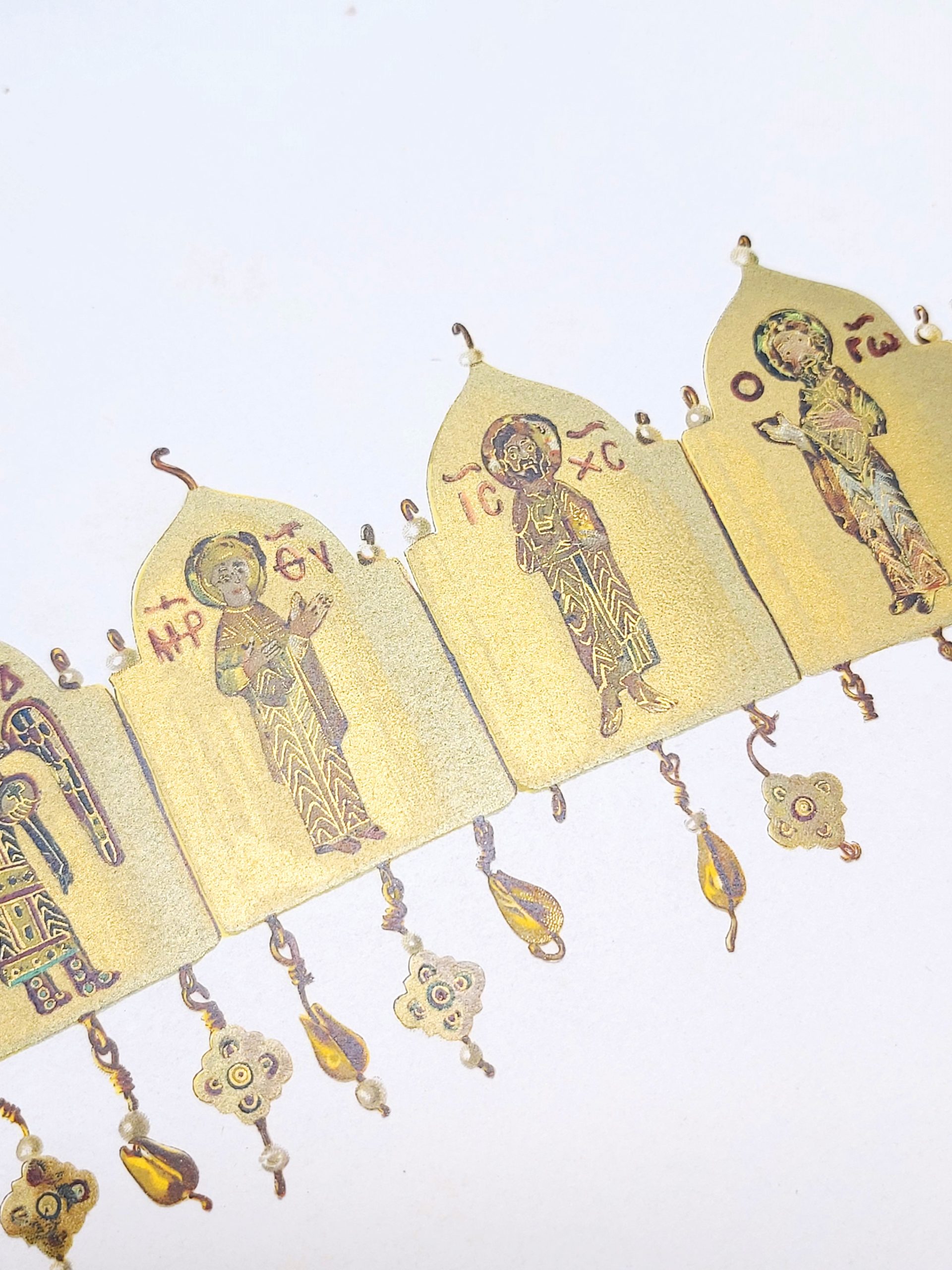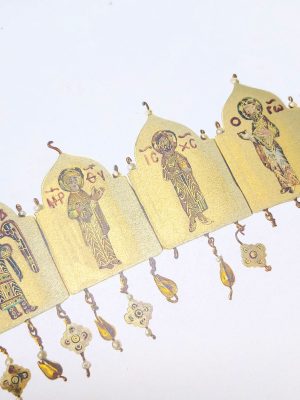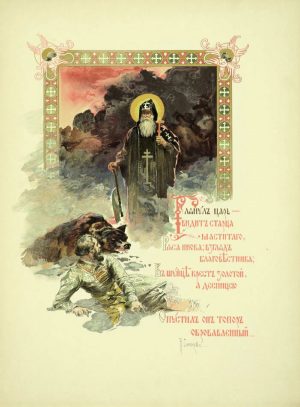Our Notes & References
The first academic work on ancient Russian jewellery and ornamental crafts: a fine, imperial copy of the first edition, dedicated to the memory of Tsar Alexander III, who had died two years earlier, and published the year of Nicholas II’s coronation, a nephew of Gd. Duke Alexey.
Nikodim Kondakov (1844-1925), Professor of St Petersburg Imperial University, was an outstanding archaeologist and historian of art. A second volume for this work, devoted exclusively to silver items, was also ready for publication, but its appearance was prevented by Kondakov’s death in Prague in 1925.
The edition was organised by the Imperial Archaeological Commission; beautifully illustrated, it contains 20 plates with chromolithographs and phototypes, and 122 polytypes within the text. The Imperial Archaeological Commission was the first Russian institution to manage archaeological research. Founded in 1859 at the suggestion of Count Sergei Stroganov, it was a successor to the Commission for the Investigation of Antiquities (which had existed since 1850). Subordinate to the Ministry of the Imperial Court and Estates, the Commission held its meetings at the Winter Palace in St Petersburg. From 1889, it became the only institution issuing “open sheets”: permits for excavations on non-private lands. The Commission ceased to exist in 1919 with the transfer of its functions to the newly organised Russian Academy of the History of Material Culture (which itself developed a rich library with many prestigious examples of rare books).
Before moving to St Petersburg in 1888, Kondakov lived and worked in Odessa, where he founded the first Russian museum of antique casts. He became a specialist in Byzantine art and iconography, and shows in this publication how Byzantine influences blend with authentic Russian motifs. In St Petersburg, Kondakov worked as the chief curator of the Middle Ages and the Renaissance at the Hermitage Museum and in 1895, he was among the founders of the Centre of Byzantium studies in Constantinople (the Russian Archaeological Institute). His knowledge and understanding of the ancient Russian art stemmed from his own archaeological expeditions to Greek sites, Macedonia, Syria, Palestine, as well as ancient Russian towns.
Russkie klady is a fine example of Kondakov’s historical approach, identifying typological characteristics of art objects and linking them to the cultural and political context of their creation, to be able to trace the evolution of ancient Russian crafts. Kondakov describes silver and gold jewellery, as well as other excavated items; he analyses ceremonial objects including Monomakh’s Cap, a chief relic of the Russian Grand Princes and Tsars. He is the first to suggest that despite apparent Byzantine influences, ancient Russian art is a distinctive art style, progressively developed by ancient Russian tribes. Among other treasures described are those excavated in 1811 in Old Riazan, in 1817 and 1880 in Kiev, in 1887 in Chernigov (modern Chernihiv in northern Ukraine), and many others.
Provenance
Grand Duke Alexei Alexandrovich (initials ‘A.A.’ embossed on spine). The fourth son of Tsar Alexander II, Alexei Alexandrovich (1850–1908) was Admiral-General, chief of the fleet and the marine department, honorary member of the Nikolaev Maritime Academy and the Academy of Sciences. His library consisted of books on maritime affairs, reference books, historical atlases and was located in a palace on the Moika River Embankment, 122, St Petersburg. After 1918, part of his collection of books was transferred to the State Publishing House and distributed in the country’s libraries.
V. I. Klochkov (Liteinyi pr. 55, SPb; illustrated boodealer label to lower endpaper).
‘Fundamentalnaia biblioteka Leningradskogo Kommunisticheskogo Un-ta’ (Main Library of Leningrad Communist University; purple ink stamps). The Leningrad Communist University was a Soviet teaching establishment designed to create cadres for Party and government work. Created in 1918 as the Zinoviev Worker-Peasant University, it was renamed in 1921 the Zinoviev Communist University and in 1929 the All-Union Stalin Communist University. Its current successor is the North-Western Institute of Management – a branch of the Russian Academy of National Economy and Public Administration under the President of the Russian Federation.
Avenir Nizoff (émigré, pianist, who lived in Edmonton, Canada, in the second half of the 20th century, and gathered a large, wide-ranging library of Russian works, especially covering art, history and literature).
Bibliography
Antikvarnoe obozrenie, № 2 (May 2008), pp. 26-28.
Physical Description
Folio. [4] pp. incl. title, 214 pp. and 20 chromolith. plates printed by K. de Kastelli, S.Pb., most with gold highlights, one with phototype printed by A.I. Vilborg, S.Pb., and many illustrations in text.
Binding
Original printed wrappers bound in contemporary Russian green half-morocco over marbled boards, spine with raised bands lettered in gilt, blue marbled endpapers.
Condition
Excellent condition, with only some minimal rubbing and minor foxing to text, occasional light pencil underlining, plates in bright condition.









